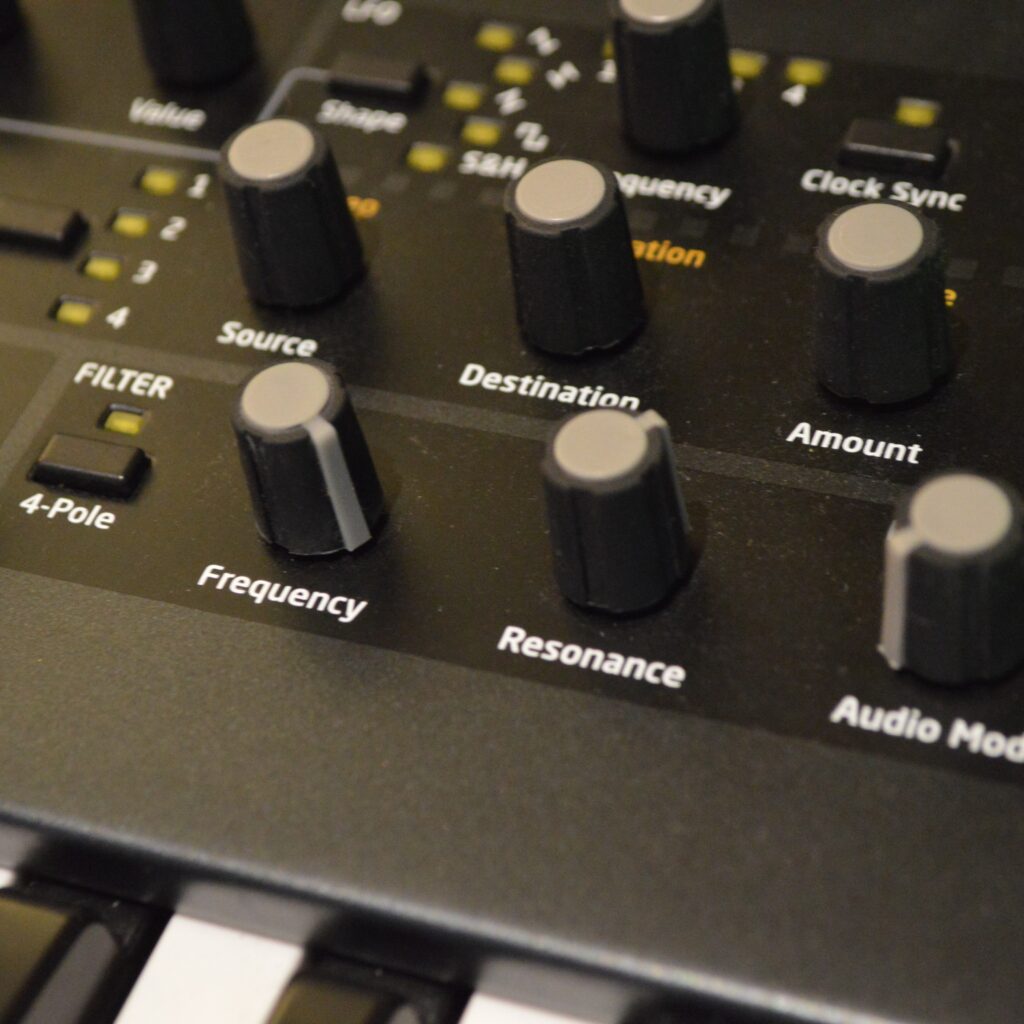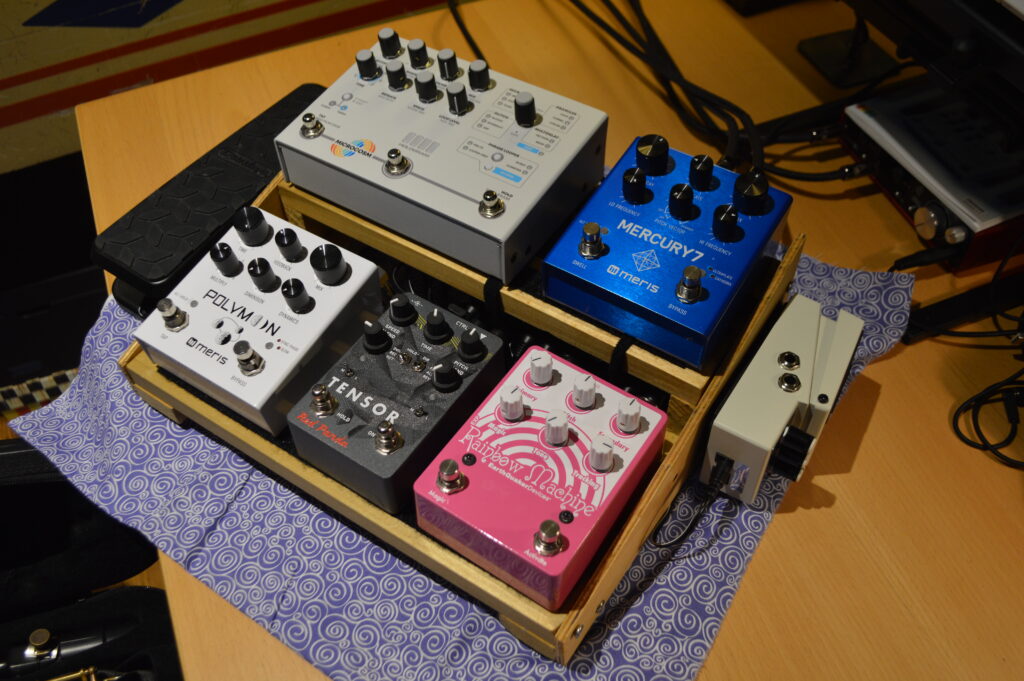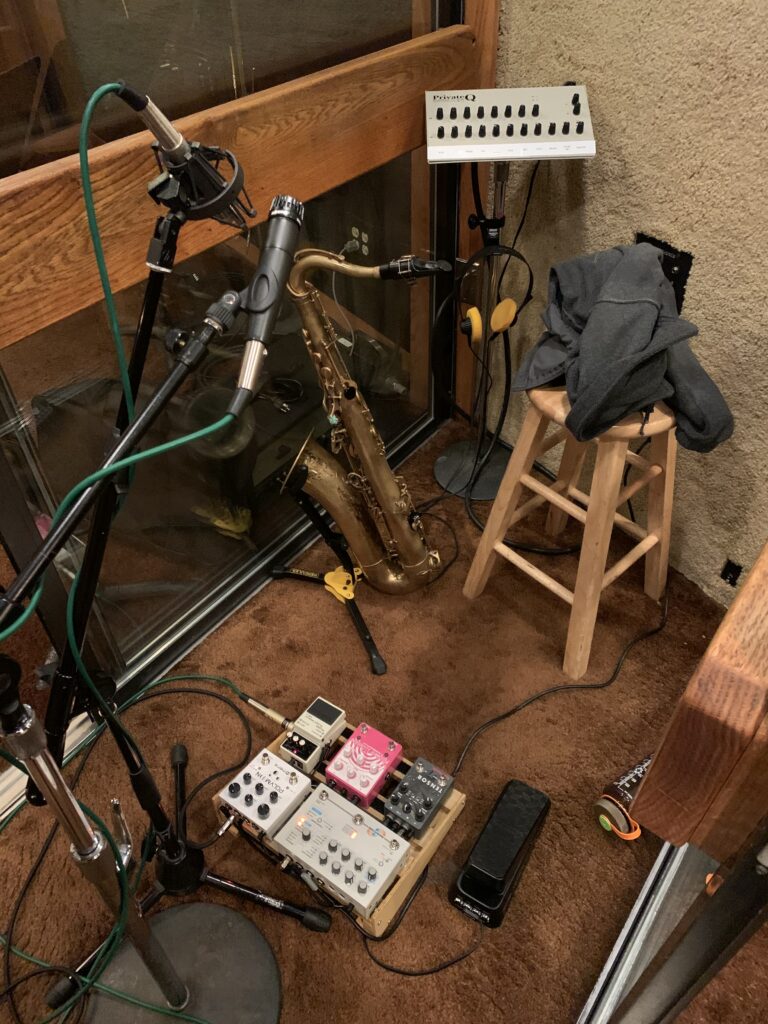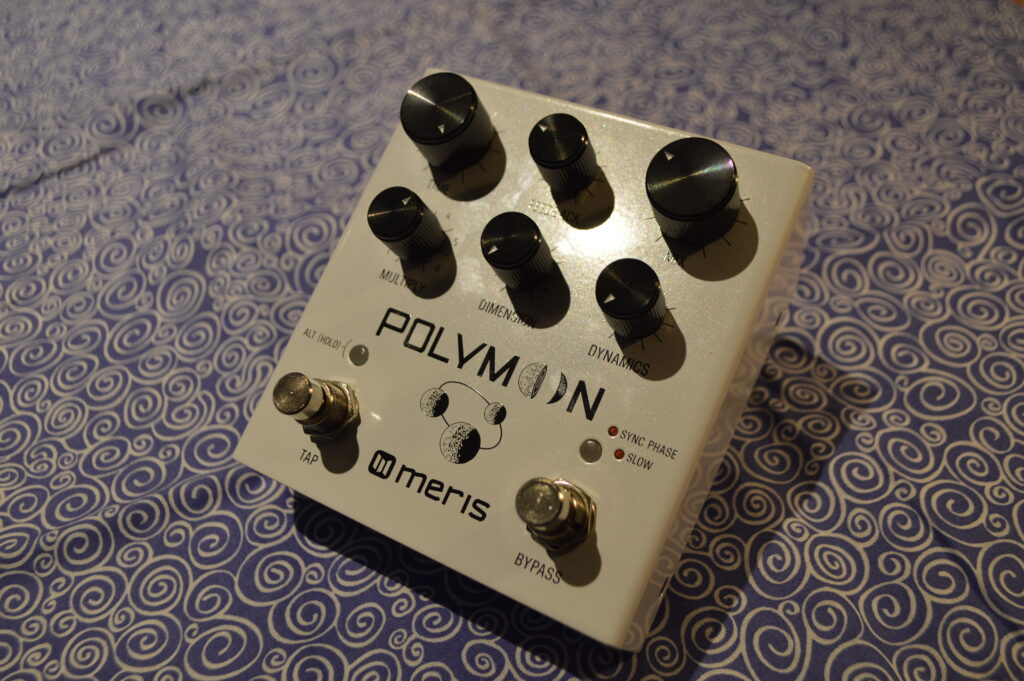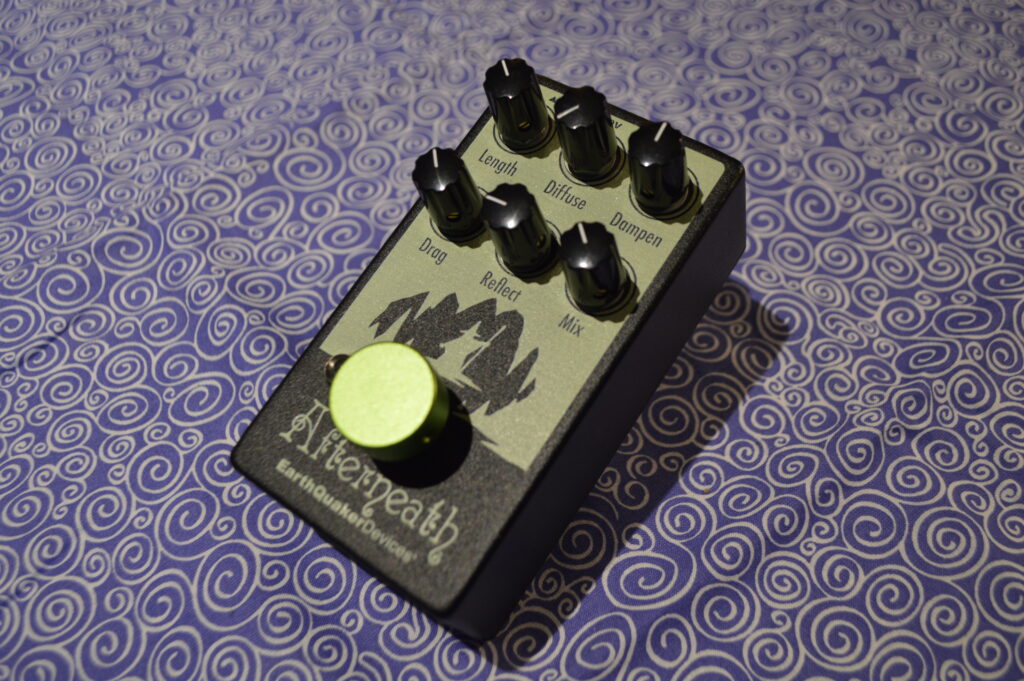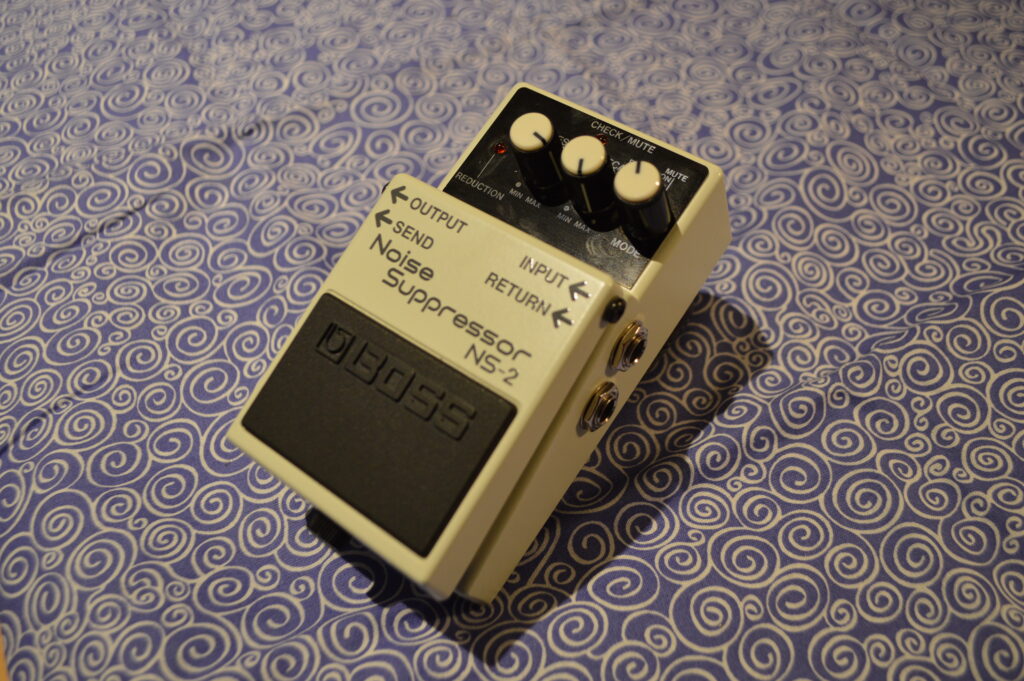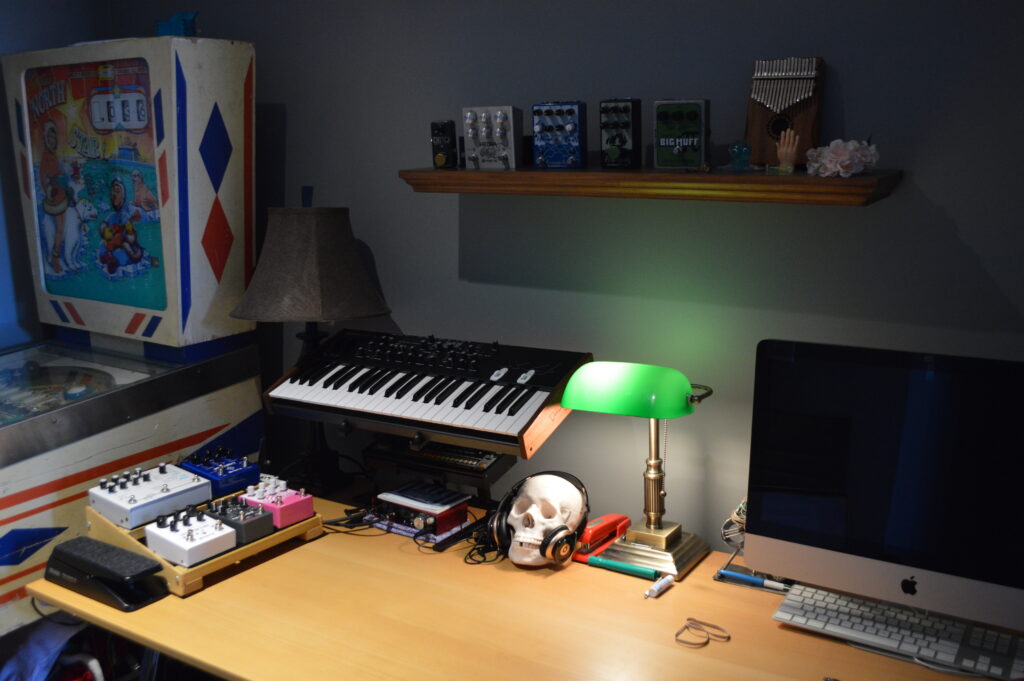1. Favourite knob/fader/switch on a piece of gear and why?
In terms of aesthetics and tactility, it has to be the main rotary knob on the ZOIA by Empress Effects. The way it subtly clicks is super satisfying, and the chunky chrome design stands out compared to other pedal knobs. In terms of functionality I’ll go with the D-C-V (Dry-Chorus-Vibrato) knob on the Walrus Audio Julianna.

It controls the stereo spread of the effect and the mix of chorus and vibrato. The Julianna is an ‘always on’ pedal for me – the modulation sounds great and D-C-V knob helps to always find that sweet spot. I typically use the Julianna to make lofi guitar tones using the random LFO setting and a slow vibrato.
2. Do you have an ‘almost’ perfect bit of kit? What would you change?
I’ll have to go with the ZOIA again for this question! It’s one of my favourite pieces of gear and I use it in pretty much all of my music. It’s both dauntingly complex and surprisingly intuitive. It’s mind-blowing how much Empress Effects managed to cram into this small box! I’ve been using it for a couple of years now, but I still feel like I’ve only scratched the surface of what it can do. I use it in all sorts of ways, such as a semi-generative synthesizer, looper, midi controller and of course as a multi-FX unit.

My only complaint is that because it does so much it’s difficult to know where best to put it in the signal chain. One possible solution would be a set of additional inputs/outputs for an FX loop, and the ability to assign modules either before or after the FX loop. A couple of additional assignable knobs would also make parameter control more immediate.
3. What setup do you bring on holiday/tour/commute etc.?
I’m a fan of the Elektron Model:Samples for making music on the go. It’s super portable and I like the directness of the ‘function per knob’ design. It’s perfect for quickly sketching out ideas whilst travelling.

Other devices offer more features, like the OP-Z, but I have a soft spot for the Elektron workflow. I don’t use it in my main setup due to the lack of direct sampling, but it’s a fun device to kill some time with.
4. What software do you wish was hardware and vice versa?
I predominantly use a ‘DAWless’ setup, so I don’t have much experience with software. I only really use my DAW (Studio One 5 to be exact) to record/master and try to do everything else using hardware. Tactility is an integral part of making music for me, I like the physical connection to whatever I’m writing. I don’t have the same drive to write music when I’m working on a laptop. I also find a limited palette of sounds to be quite inspiring, so the inherent limitations of hardware gear can paradoxically be liberating.
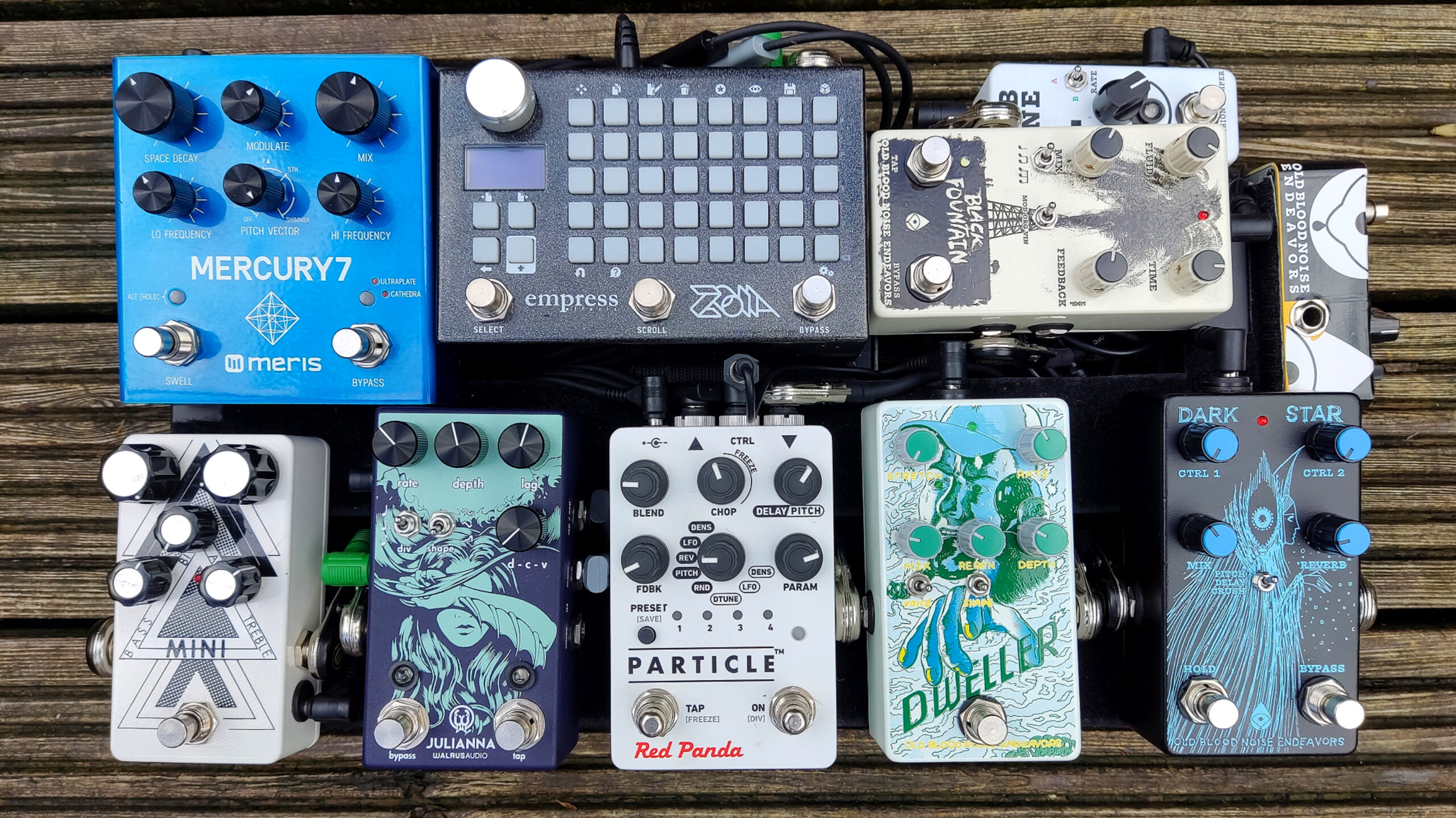
That said, I would love a virtual version of my pedalboard so I could try out different setups without having to tear the whole thing apart!
5. Is there anything you regret selling… or regret buying?
I recently sold my Walrus Audio Slö reverb pedal and replaced it with a Meris Mercury7. Although I really like the expansive stereo sound of the Mercury7, I definitely prefer the modulation on the Slö. It has a unique dreamy quality which is perfect for lo-fi reverbs and woozy textures. I would rebuy it in a heartbeat if they ever made a stereo version with a random LFO mode

My biggest gear regret is not looking after my Sovtek Big Muff. Unfortunately it’s been battered from years of gigging and no longer has the original knobs or switch. It’s just too temperamental to use regularly in my setup now.
6. What gear has inspired you to produce the most music?
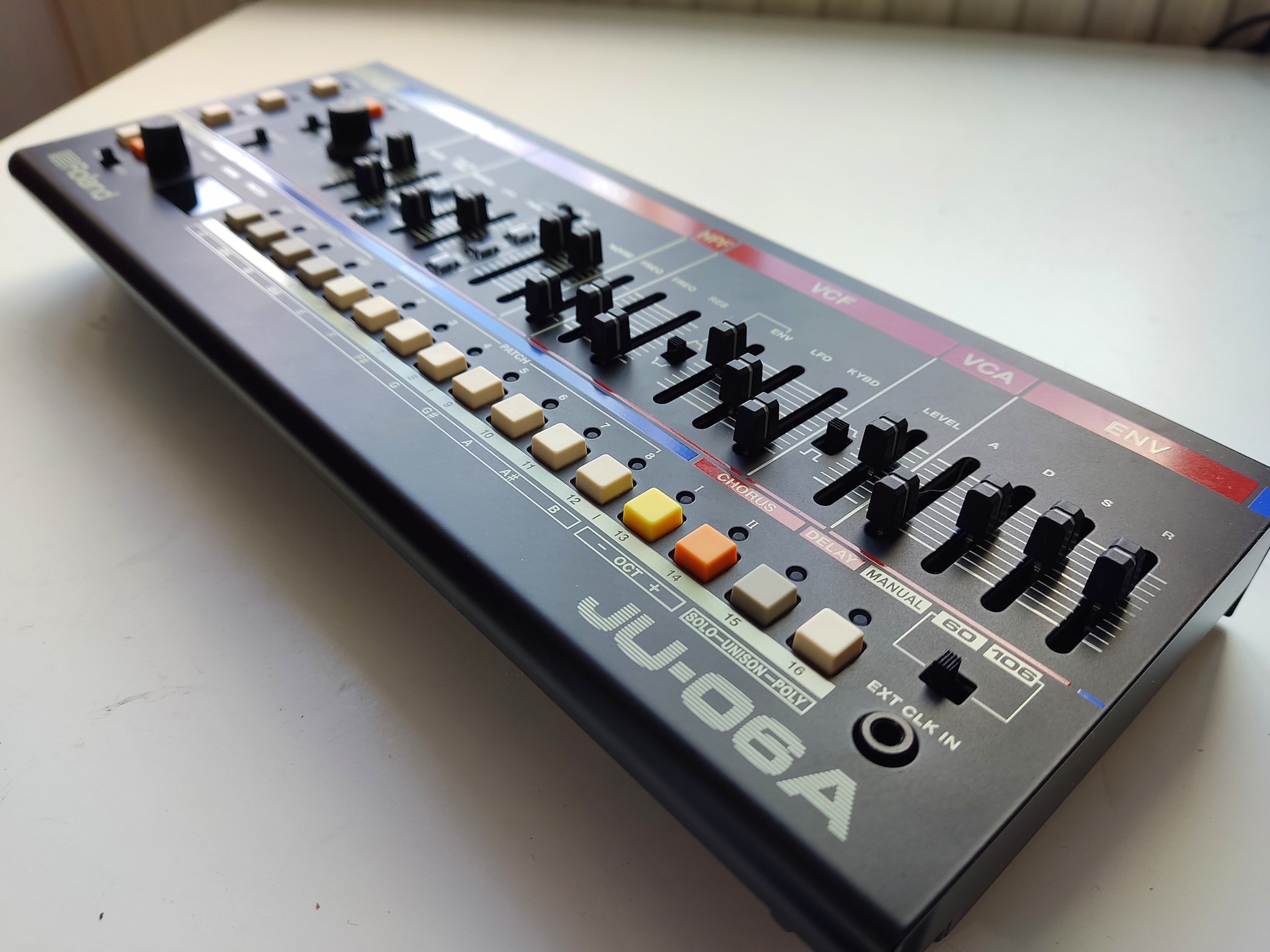
I’ve been really inspired by the Roland JU-06A synth over the past year, it’s the synth I come back to most often. I love the range of sounds, the simplicity of patch design and its compact size. Roland did a great job replicating that classic Juno sound in a small and affordable package. I also get a lot of inspiration from my humble Boss RC202 loop station. I love working with loops and layers, and the RC202 offers a good balance of features and usability. All of my tracks begin as loops, and I wouldn’t know where to start without my RC202.
7. If you had to start over, what would you get first?
This is a bit of a cop out, but if I had to start over I would probably start with some guitar and piano lessons! I’m completely self-taught, so I sometimes feel a little limited by my technical skills. To answer the question more directly, if I was starting over with electronic music production I would probably begin with an Arturia Microfreak.

Due to the wide range of features and relatively low price, it’s a great introduction to hardware synthesis. The keybed isn’t for everyone, but the range of synth engines, the intuitive modulation matrix and the analogue filter make it incredibly good value. If it had built-in FX it would be the total package. Although I don’t use mine much anymore, I still consider it to be a modern classic.
8. What’s the most annoying piece of gear you have, that you just can’t live without?
As much as I love my Elektron Digitakt, it can be a real pain to use sometimes! There are a lot of functions which are not immediately apparent, and it takes time to learn how to use it properly.
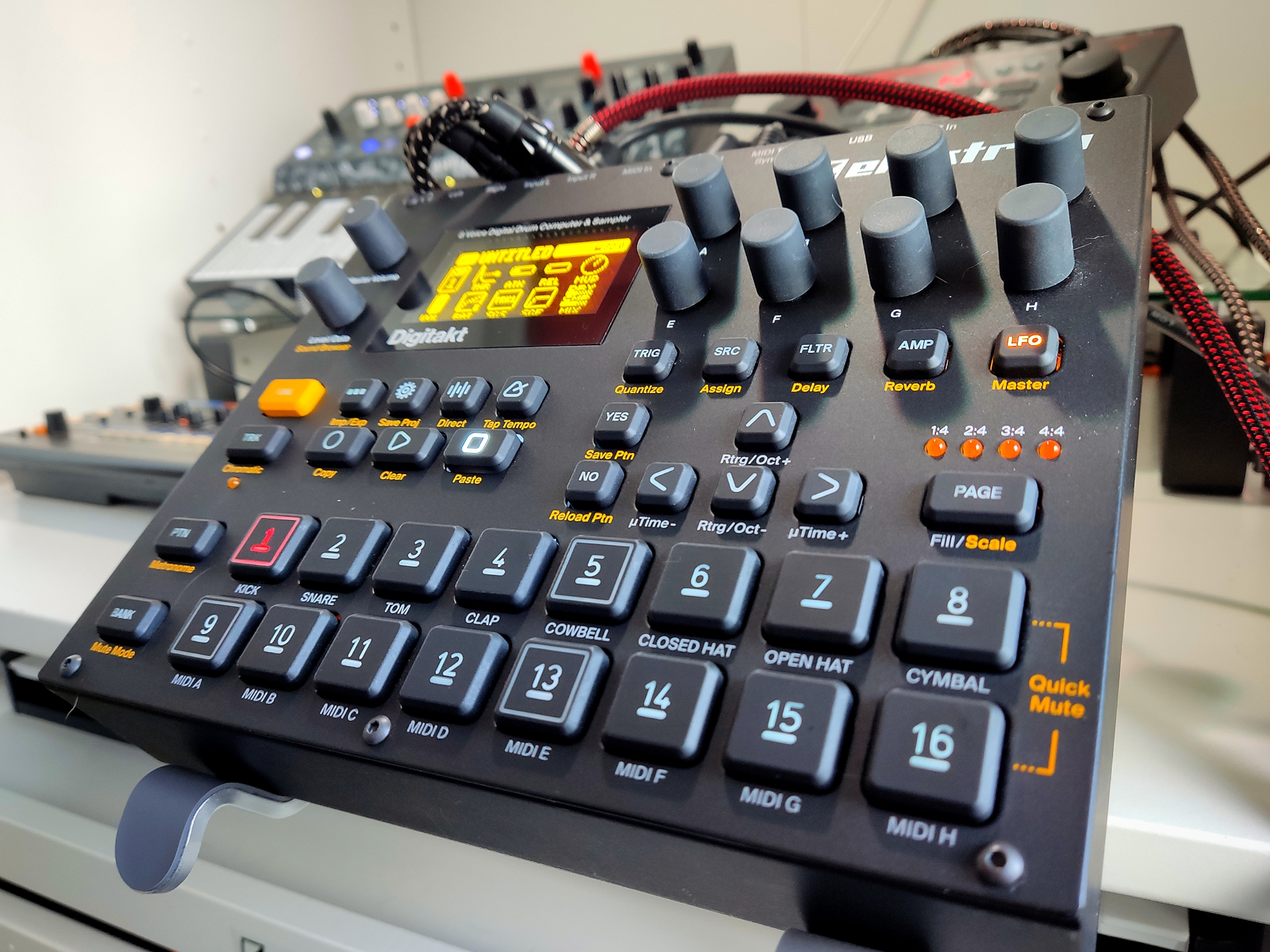
I actually prefer the usability of its little brother, the Model:Samples, but the additional features of the Digitakt make it substantially more powerful. It’s basically the brain of my setup, even though I probably don’t use it to its full potential. Elektron have done a great job with software updates over the years and have added a number of clever features, like the secondary LFO.
9. Most surprising tip/trick/technique that you’ve discovered about a bit of kit?
The Expression Ramper by Old Blood Noise Endeavours is a deceptively versatile pedal, which offers a unique approach to expression control. There are so many ways to use this tiny pedal to drastically change how other pedals work.
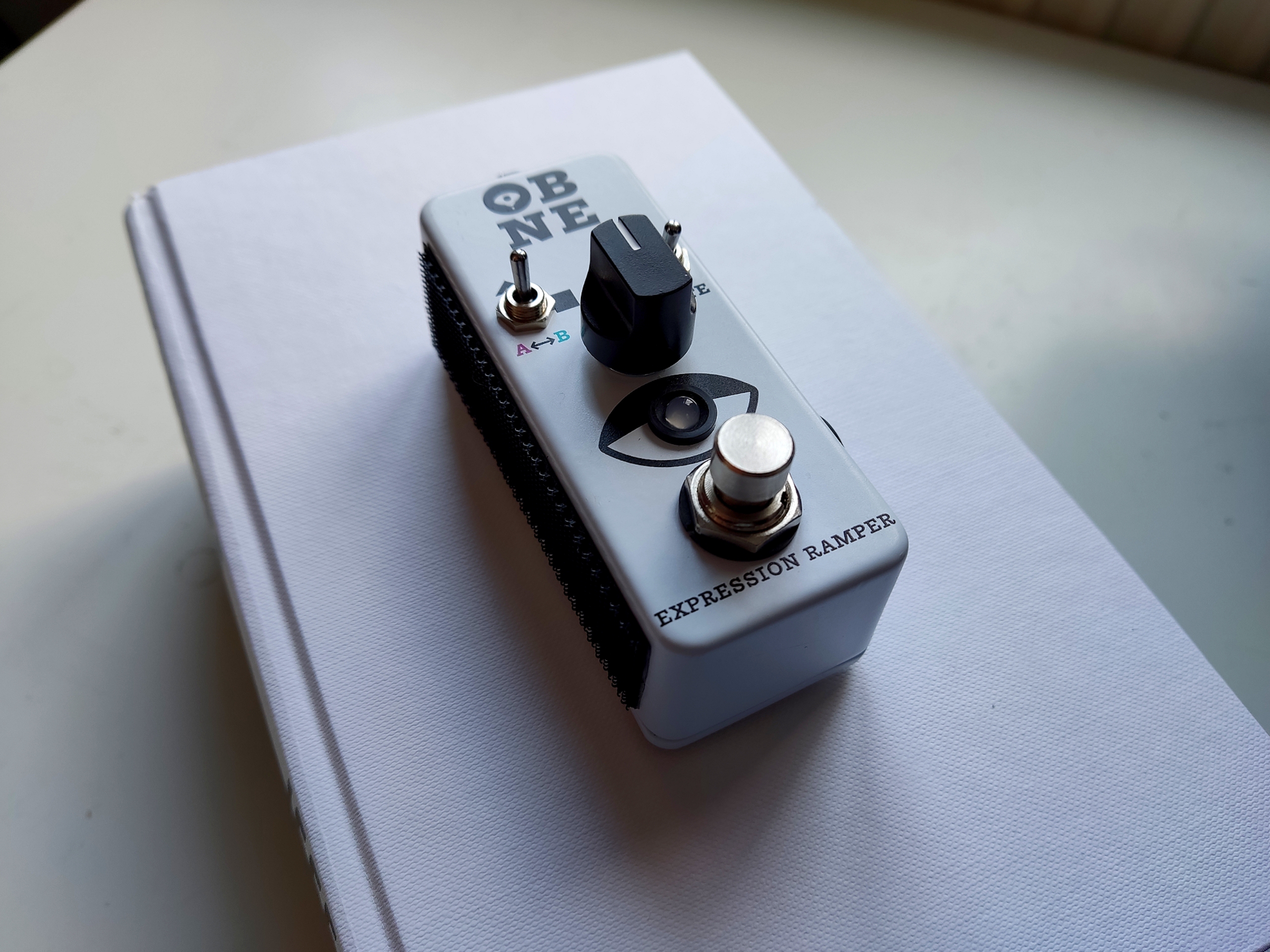
My favourite trick is to use the Expression Ramper to control the pitch parameter on the Red Panda Particle v2. Whilst in reverse mode it creates a fantastic reverse pitch-shift effect which cascades with the delay repeats.
Artist or Band name?
Accelerator Jengold.
Genre?
A mix of lofi, synthwave, dreampop and shoegaze.
Selfie?

Where are you from?
North Wales, UK.
How did you get into music?
Music has always been an important part of my life; I’m thankful that my parents and brother introduced me to artists like The Cure, Radiohead, Tom Waits, Massive Attack, Godspeed You! Black Emperor and Brian Eno. I took up bass when I was a teenager and played in a few post-rock and post-metal bands whilst in University. I later moved into electronic music production using software like Reason, and then got into hardware gear with an Arturia Microbrute (which I sadly no longer own).
What still drives you to make music?
I’ve always enjoyed being creative and having a musical outlet helps me to cope with stress and anxiety. I like having a way to express how I feel, even if I don’t always understand my own thoughts and feelings – which probably explains why most of my music has a downbeat or melancholy vibe. Producing something tangible from my creativity, like a finished song or EP, is a big driver for me.
I think this is linked to my preference for tactile music production; using software feels too ephemeral to me. I love conceptual music and take inspiration from a wide range of books, films and other media when writing. Short-form jams on Instagram are my primary output, so I’m super inspired by other artists with a similar approach like Andrew Black, Joshua Dowell and Simon Von Walbrook. I’m really proud to have had my music featured on microbiology posts by Chloe Savard and Penny Fenton, and I would love to produce more music for other media.
How do you most often start a new track?
I typically start with sound design, either creating a unique guitar sound using various FX or developing a new synth patch. I’ll then loop a simple melody and experiment with different layers until it feels right. Sometimes I focus on the melody, other times I focus more on the overall vibe, it just depends on the individual track. Percussion usually comes last so I can choose samples and rhythms to fit the music.
How do you know when a track is finished?
Most of my music is based around looping and building layers of melody, so an important skill is knowing when to stop. When I can remove a layer and the track sounds better, it’s probably finished! If I get stuck on a track I’ll take a break for a few days and then come back to it with a fresh perspective. My least favourite part of making music is mastering, so I’ve developed a couple of mastering templates in my DAW to help speed up the process and remove some layers of indecision. For official releases on Spotify (etc.) I rely on my good friend Chris Walker, who always does a great job fixing up my masters.
Show us your current studio
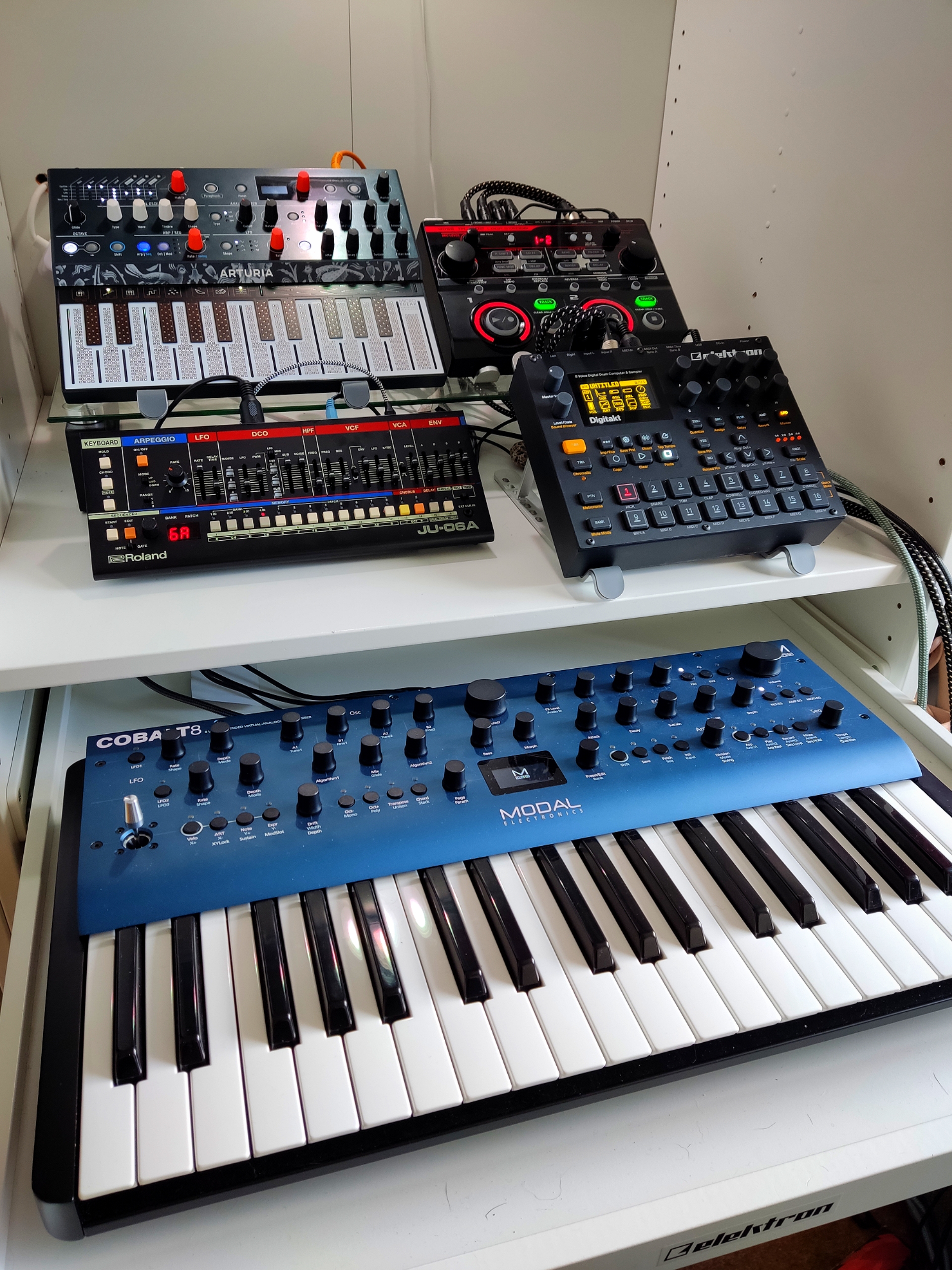
My setup is in a tiny office/walk-in wardrobe in my house, but it has pretty much everything I need. I’m planning to add an analogue synth at some point (like a Pro-1 or Minilogue) and a Colour Palette electronic kalimba by Lottie Canto.
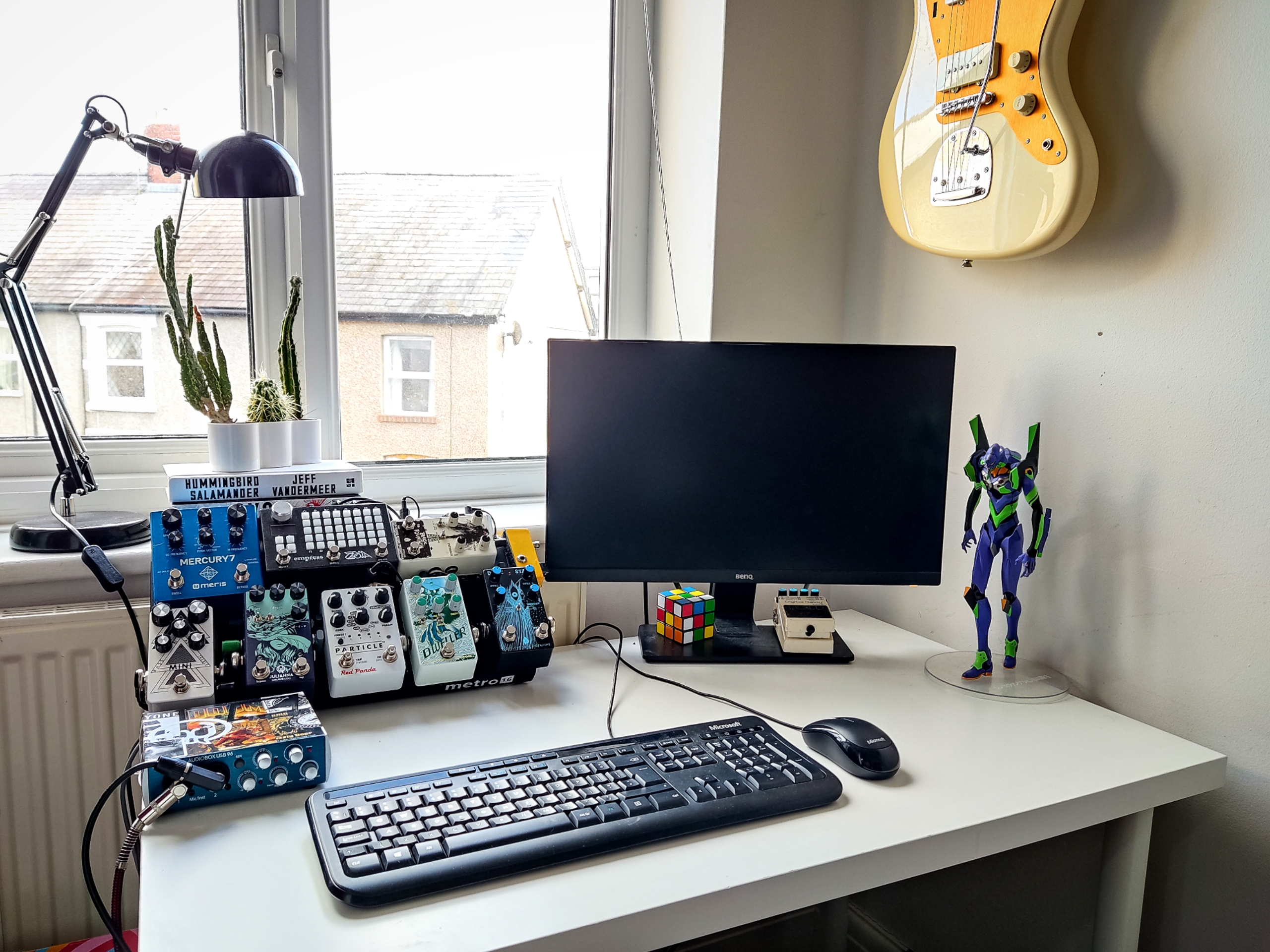
Best creative advice that you’ve ever heard?
I’m going to echo what Dev Bhat (Shipwreck Detective) said in his interview for this blog: “keep it simple, stupid!” This really resonates with my own approach to writing music. There’s a skill to communicating an emotion, theme or concept in an honest and direct manner without resorting to cliché. I like to embrace simplicity and try to express myself with a limited number of components.
An important part of being creative is trusting your instincts and not focusing too much on what does or doesn’t work in theory – theory should be used to help us translate and communicate our ideas rather than to provide a rigid framework for them.
Promote your latest thing… Go ahead, throw us a link
I regularly post jams on Instagram (@accelerator.jengold), so that’s the best place to keep up to date with what I’m doing. My music is also available on most streaming platforms, just search for Accelerator Jengold. My latest EP, Pyre, came out last year and is full of weirdo synthwave tunes, go check it out! I’m currently working on a new EP and some upcoming collaborations. Thanks!
Instagram: https://www.instagram.com/accelerator.jengold/
Spotify: https://open.spotify.com/artist/0KrYUaPA2BsqVMiDCVmywM?si=ZJdIN-wDS4-J0UdkHjEWsA
Linktree: https://linktr.ee/acceleratorjengold
